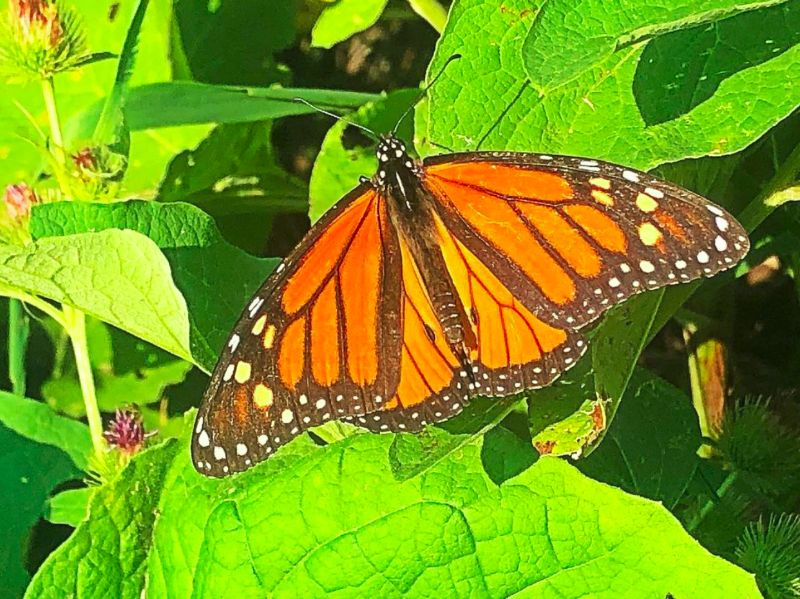The following is part of an ongoing dialogue with the feelings and questions of our time. This month, our teacher Connie Habash leads us through her practice of “Returning to my Senses,” a sensation rich, narrative meditation on the gifts of tuning in to the more-than-human environment.
It was an upsetting day. I knew I had to get into the forest – ASAP.
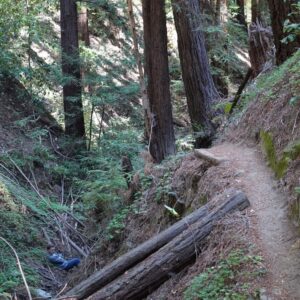 As I arrived and parked, a feeling of relief was beginning to envelop me, and a few steps down the trail, the smile returned to my face. I removed my shoes, and felt the prickly rocks under my feet. It was welcome, because there were also stretches of soft dirt, gentle compost, warm sunshine, and cool moistness.
As I arrived and parked, a feeling of relief was beginning to envelop me, and a few steps down the trail, the smile returned to my face. I removed my shoes, and felt the prickly rocks under my feet. It was welcome, because there were also stretches of soft dirt, gentle compost, warm sunshine, and cool moistness.
I felt immediately restored by the call of the hermit thrush high in the canopy, the blooming pinto violets and star flowers, and the new pale green growth on the baby redwoods. I smelled the crushed bay leaves beneath my feet. I felt the wet, cold stones and refreshing trickle of the creek over my toes.
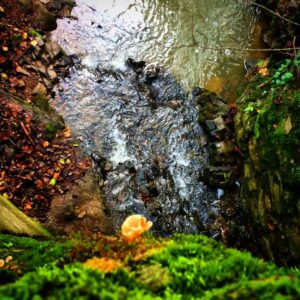 Sinking down into my sit spot, ease enveloped my body as well as the sound of gurgling water from the creek, and the whistle of the Pacific Slope Flycatcher. I was relieved to be in silence, no to-do list on my desk. Just being – me, the stream, the redwood forest.
Sinking down into my sit spot, ease enveloped my body as well as the sound of gurgling water from the creek, and the whistle of the Pacific Slope Flycatcher. I was relieved to be in silence, no to-do list on my desk. Just being – me, the stream, the redwood forest.
Light and movement played with me. My eyes caught the movement of a large stone on the opposite bank. It was about the size of a football. Am I seeing it bob and tilt, moved by the water flowing across it? Or is that the refraction of sunlight streaming through the wind-blown canopy overhead?
 Is that a butterfly that just landed in my peripheral vision on a twig? It was just far enough away that I wasn’t sure. It could be just a dried leaf, not yet fallen to the ground. I waited patiently, gazing; after a couple minutes, it daintily flew away, and I was filled with joy!
Is that a butterfly that just landed in my peripheral vision on a twig? It was just far enough away that I wasn’t sure. It could be just a dried leaf, not yet fallen to the ground. I waited patiently, gazing; after a couple minutes, it daintily flew away, and I was filled with joy!
Looking back at the rock across the creek, the light shifted, revealing that the stone was as still and steady as any other on the embankment, but my mind had been tricked with the flickering light. I wondered what else I misinterpreted in my life by the play of light and shadow.
 I returned to my senses, and my mind immediately shifted out of all the pressure, the have-tos, the pleasing everyone else, and was restored in being Present. Literally and figuratively, I returned to my senses and I reveled in the joy of true aliveness in the more-than-human world.
I returned to my senses, and my mind immediately shifted out of all the pressure, the have-tos, the pleasing everyone else, and was restored in being Present. Literally and figuratively, I returned to my senses and I reveled in the joy of true aliveness in the more-than-human world.
May the joy of nature presence and aliveness find you, Connie, Ariana, and the Earthbody Team
NATURE PRACTICE
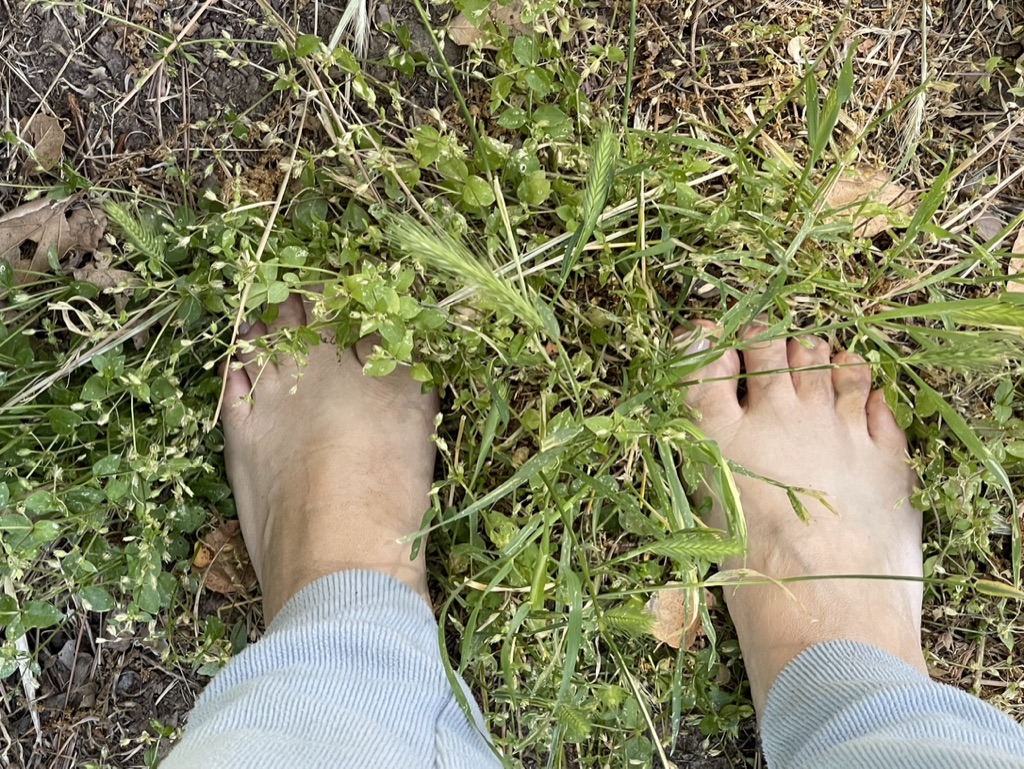
Ecotherapy Practice – What’s Up by Looking Down
By Connie Habash
When we’re out hiking or walking, we often look down to where our feet are stepping. And that’s OK! You can discover a lot about your ecosystem and what has ventured there before you by looking down. Find out what’s up in your neck of the woods (or urban park) by spending time in this practice of exploring the ground.
- What do you notice about your trail? If you’re on dirt, take in the textures of the soil, the quality and color of it. Is it rocky, sandy, covered in leaves? Are there rivulets or depressions where rain has washed through or settled? Is it moist, dry, rich or somewhat barren?
- Look for anything that might be crossing your path. There could be ants, spiders, millipedes, even a snake. During the more rainy times of year here in Northern California, I am sometimes blessed by a banana slug or a California Newt!
- Who has ventured through there before you? Do you see horseshoe prints, dog paws, perhaps the slithery movement from a lizard? Are there a lot of human footprints, or none at all? Perhaps there is a mystery footprint that you can take a photo of and sleuth what nature-being crossed your path.
- Finally, what plant friends grace the sides of your trail, or have left their mark on the path? When I walk in the woods near me, I find peeled reddish-brown bark and tiny, fragrant white flowers that tell me Madrone trees are above in the canopy. I see the yellow-ish remains of decomposing Bay Laurel leaves and smell their fresh and pungent scent. The cones from a Douglas Fir and fat acorns with wide caps from the Tan Oak tell me what is over my head without even looking up.
Notice how you feel when you connect more with the ground beneath you. Do you feel more part of the more-than-human world? What emotions, sensations, insights does it bring? There’s so much more that you could explore outdoors and in yourself by looking down; lower your gaze and have an adventure the next time you’re out.
PROFESSIONAL RESOURCES
This month in our we feature climate change related resources.

A Taxonomy of Climate Emotions: Not All Climate Emotions are Negative In this article, Britt Wray, author of Generation Dread: Finding Purpose in an Age of Climate Crisis, and newsletter Gen Dread, explores Panu Pihkala’s Taxonomy of Climate Emotions and provides examples of how different clusters of climate emotions may show up. Britt highlights how we can experience both “positive” and “negative” emotions in response to the circumstances of climate change, helping us to make sense of the range of emotions we might experience, and lean into some of the motivating energy of our responses.
HOPEFUL ACTIVISM
This month we feature Indigenous activists and Land Back successes!
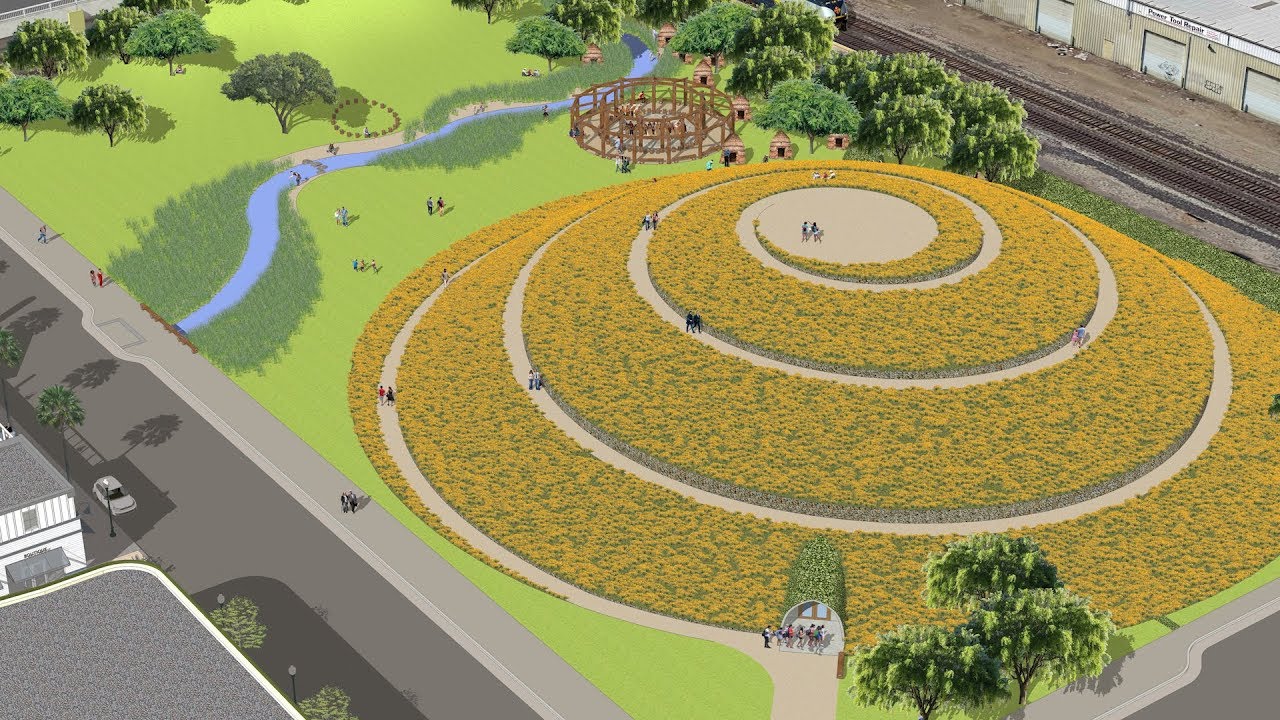
The West Berkeley Shellmound is Free!
In the biggest urban Land Back victory in California history, on April 30th, the West Berkeley Shellmound and Village Site was transferred to the Sogorea Te’ Land Trust, a women-led indigenous land trust. This comes after a hard fought, five-year legal battle over the site, which will become a cultural center and open space park. Lisjan Ohlone leader Corrina Gould said
this about the victory, “Things can change in this world. It is trust that makes things right. Partnering has made this dream a reality. Thousands of people—funders, Native people and allies—the West Berkeley Shellmound brings people together. Before, resources were unavailable to help Native people protect sacred sites. Now we see what happens when resources are made available. Powerful prayers have been laid down at the West Berkeley Shellmound by people from all over the world. That has changed the energy of the place and helped make this happen.”
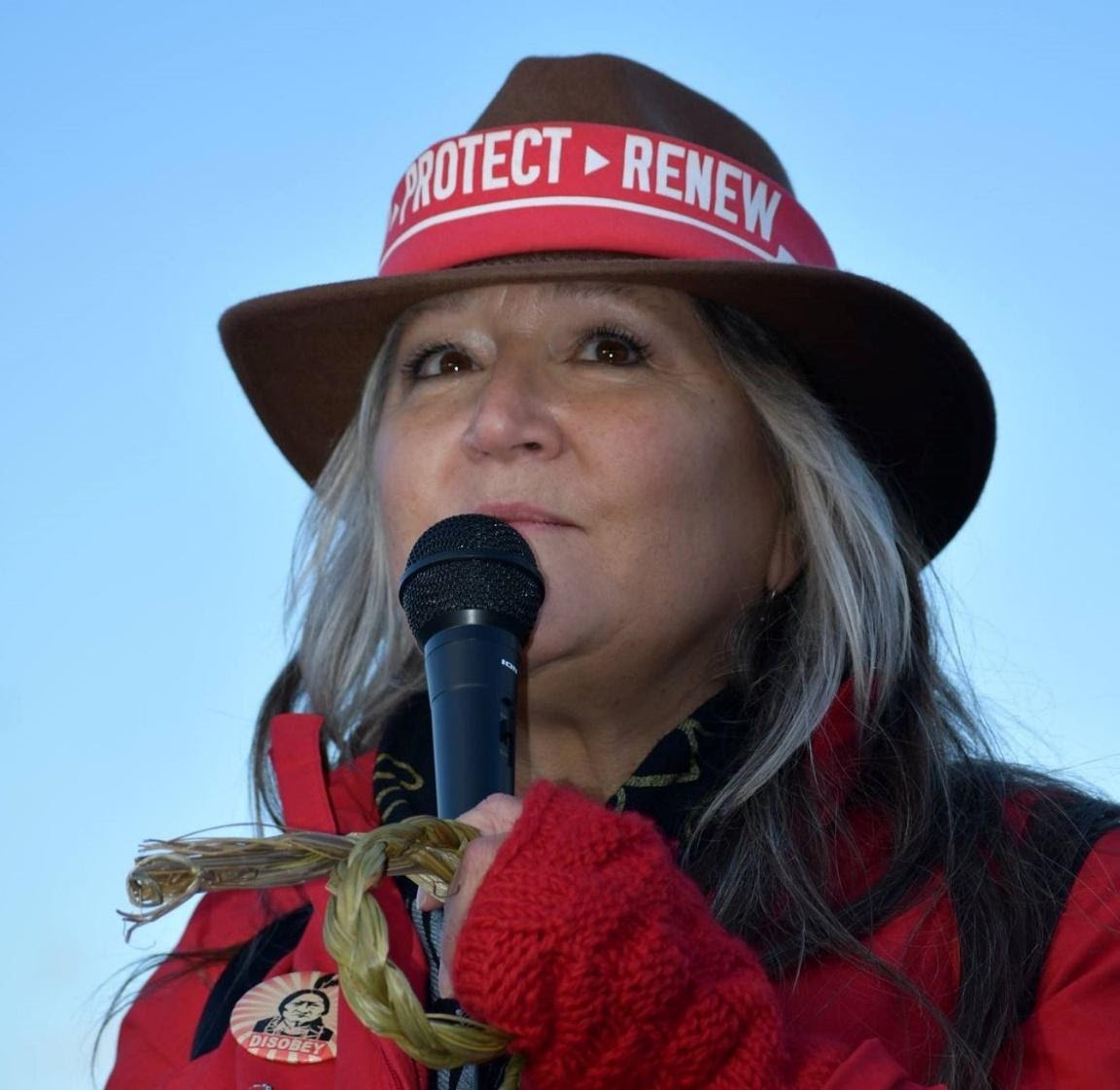
Check out Penny Opal Plant’s Earth activism work!
Earthbody Institute was tremendously graced with the wisdom of elder Penny Opal Plant, as a featured guest during one of our recent Level 3 live sessions. Pennie Opal Plant is an Indigenous grandmother of Yaqui, Mexican, undocumented Choctaw and Cherokee and European descent. Born in the shadow of the Chevron Refinery in Richmond, CA, she has been a protector and defender of the sacred system of life for over 35 years. Please check out the organizations below, which Penny has founded, or serves a central role in supporting:
POETRY AND INSPIRATION
This month we honor Asian Pacific American Heritage Month featuring a poem by Khairani Barokka, Minang-Javanese writer, and we welcome “wild love” of nature with the words of Mary Oliver.
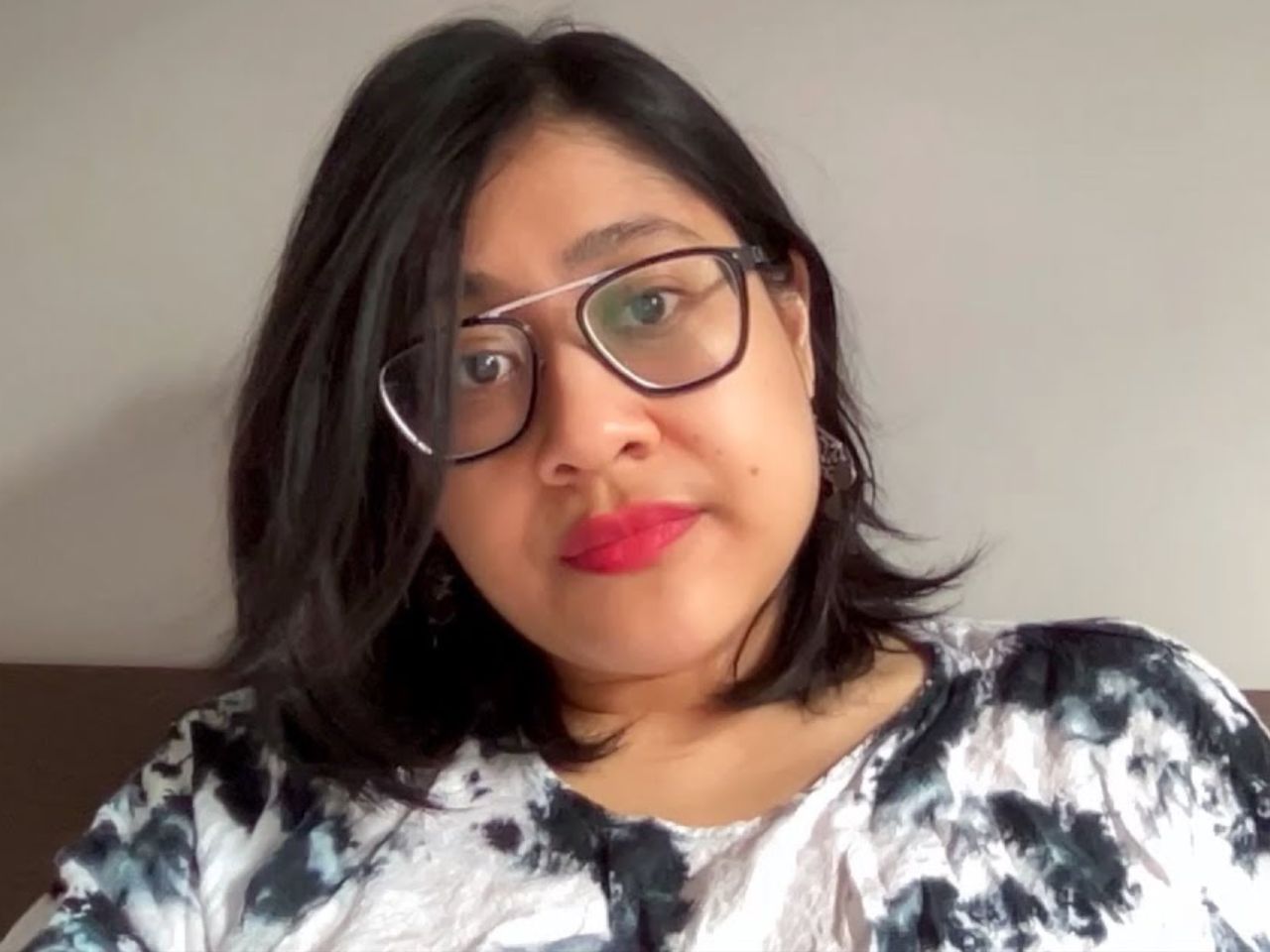
Horizon
by Khairani Barokka
Listen to Khairani Barokka read Horizon
Who will count our ledgers
When sun pops over the Golan Heights
Bird feeders filled with ossified seed sludge
Metal corroding
in the mouths of cockroaches
No one to understand
how I made you moan
Catalan, or Fermat’s Theorem
No soul to comprehend tangents,
Singularity, the trappedness of living
What did I ask Allah for when I was slight
In my own row
at the school masjid, uniformed
Did I ask for eternal life
In an Eden interpreted by women
Did I want the ticking
of thermometer spikes
As a way to ascertain that yes
Hellfire and Noah’s flood
Would come back around for the lot of us
Eons of wisdom
in the great West Sumatran edifice
Was burned in a fire
My veins preserving a wistful hum
To the tune of crackling
Nothing is new
Spears and gunpowder
Noose on a slave in Batavia
Old folks thinking
they’d once been the babes
Slung over their father’s backs
I miss a time,
when my elder smiled alive on us
But scores then had already died
On the spark of a stealth
Washingtonian hit list
Around virescent fields
When do we ever know
to turn off the clock
What a portion of time
ever means in multitude
If all these mocking were truthful
They’d be a dribbling constancy of tears
Hooting cackles, nostalgia
Pouring into mugs of tight facts
All ochre glow
not found in accumulation of bells
Induced by a sense
for number of acolytes
But if I knew the answer
For where on this tiny orb
We are meant to find
constancy of grace never ending
I’d go off and sing, self-satisfied
Khairani Barokka is a Minang-Javanese writer and artist from Jakarta, now based in London, whose work is presented widely internationally. Among Okka’s honours, she has been Modern Poetry in Translation’s Inaugural Writer-in-Residence, a UNFPA Indonesian Young Leader Driving Social Change, and Associate Artist at the UK’s National Centre for Writing. Centering disability justice as anticolonial praxis, her works include most recent book Ultimatum Orangutan (Nine Arches), shortlisted for the Barbellion Prize.
Visit her website: https://www.khairanibarokka.com/
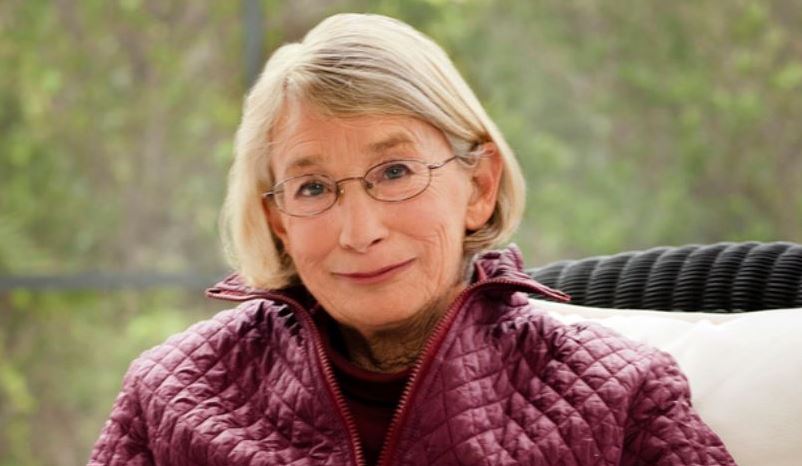
The Sun
by Mary Oliver
Have you ever seen anything
in your life more wonderful
than the way the sun, every evening,
relaxed and easy,
floats toward the horizon
and into the clouds or the hills,
or the rumpled sea, and is gone–
and how it slides again
out of the blackness,
every morning,
on the other side of the world,
like a red flower
streaming upward on its heavenly oils,
say, on a morning in early summer,
at its perfect imperial distance–
and have you ever felt for anything
such wild love–
do you think there is anywhere, in any language,
a word billowing enough
for the pleasure
that fills you,
as the sun reaches out,
as it warms you as you stand there,
empty-handed–
or have you too
turned from this world–
or have you too
gone crazy for power,
for things?
Mary Oliver is one of America’s most significant and best-selling poets. Born in 1935 in Cleveland, Ohio, and raised in nearby Maple Heights, Mary Oliver passed away on January 17, 2019. She was was an American poet whose work reflects a deep communion with the natural world as well as a belief that poetry “mustn’t be fancy.” Oliver, who had a devoted following, was known for her use of plain language and accessible imagery.
Among her many honors are the Pulitzer Prize in 1984 for American Primitive and the National Book Award in 1992 for New and Selected Poetry. She was awarded fellowships from the Guggenheim Foundation and the National Endowment for the Arts, American Academy of Arts and Letters Achievement Award. Other awards include the Lannan Literary Award, Christopher and L.L. Winship/PEN New England Award, Poetry Society of America’s Shelly Memorial Prize, and the Pioneer Award from the Santa Monica Public Library Green Prize for Sustainable Literature.
Visit her official website: https://maryoliver.com/
Thank you for reading! We welcome your comments and questions. Contact EBI: earthbodyinstitute@gmail.com.
We acknowledge that The Earthbody Institute is located in Huchiun, in unceded Lisjan territory, now known as Oakland. We honor and support the ancestors and present Lisjan people. We encourage you to learn more and make a donation to support the return of their land and culture.

